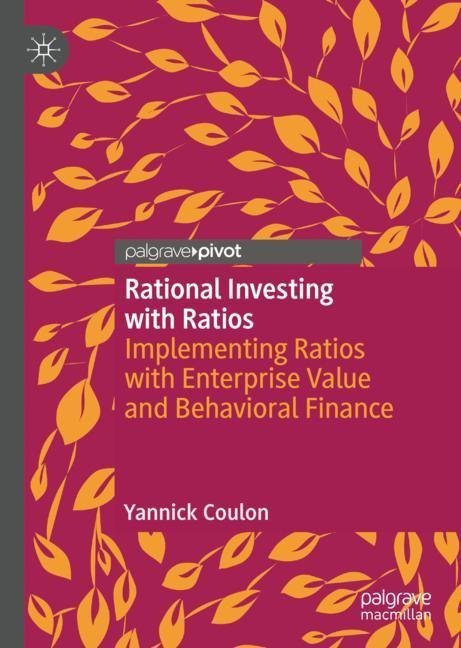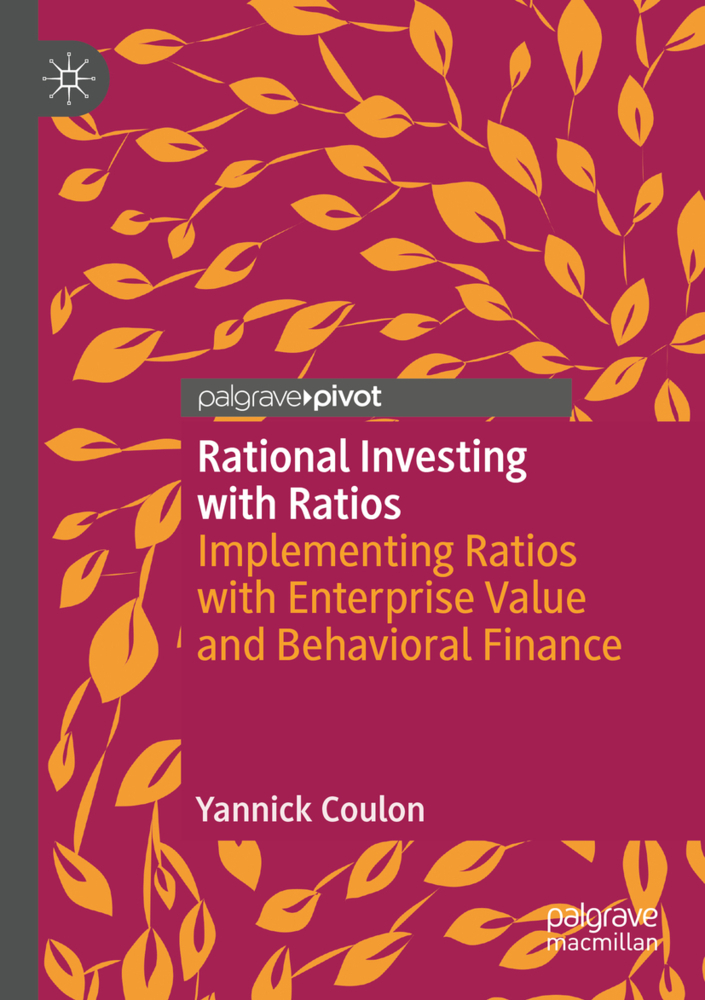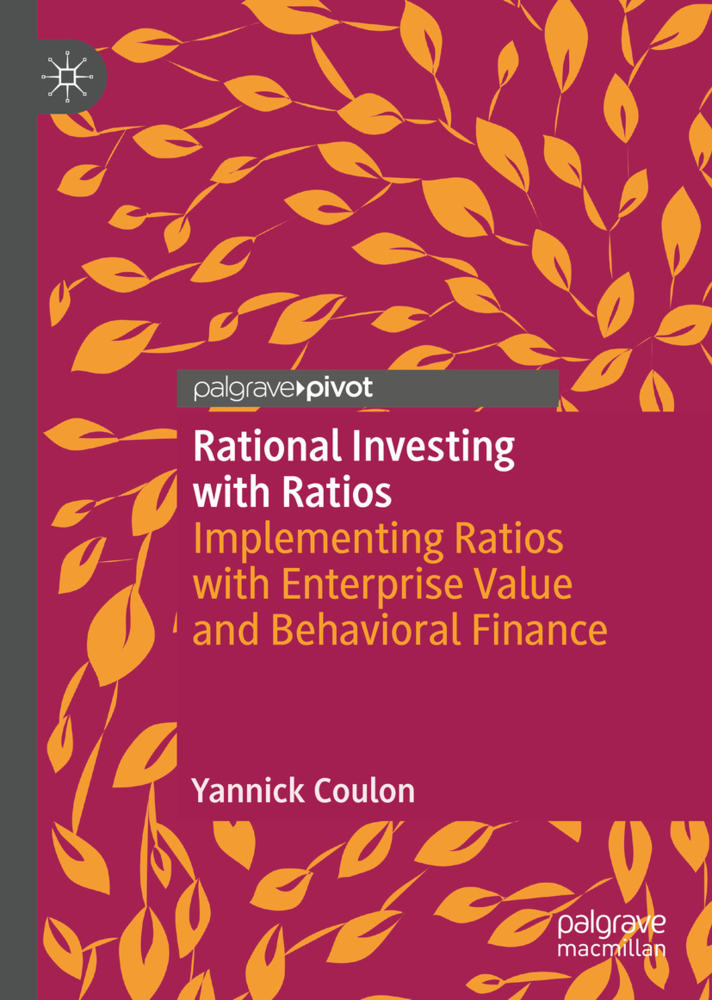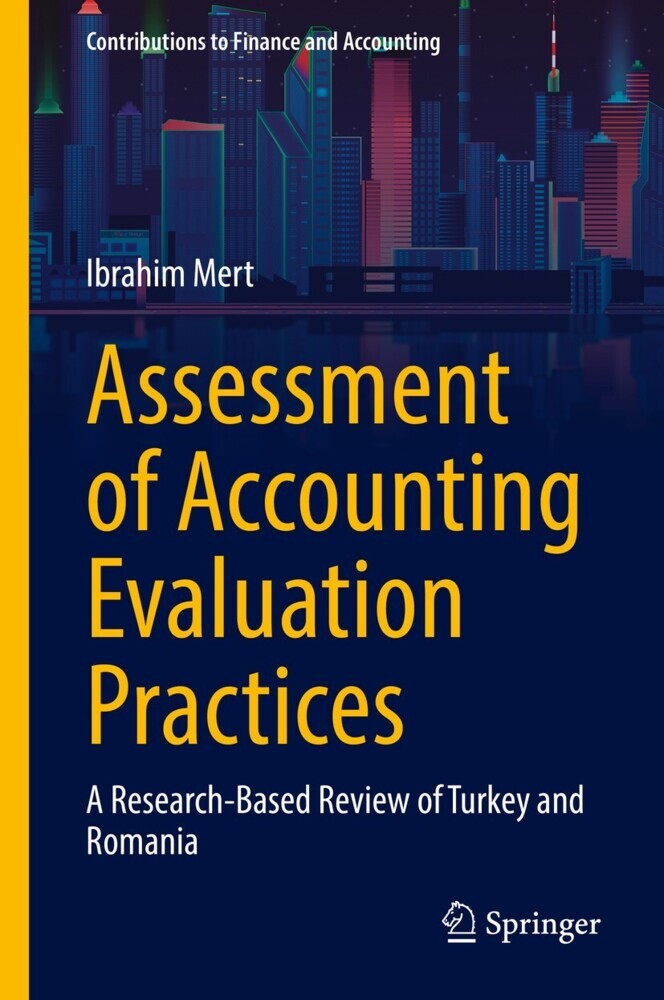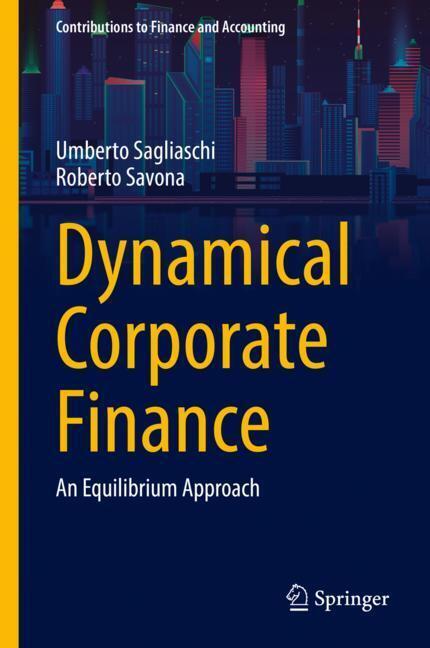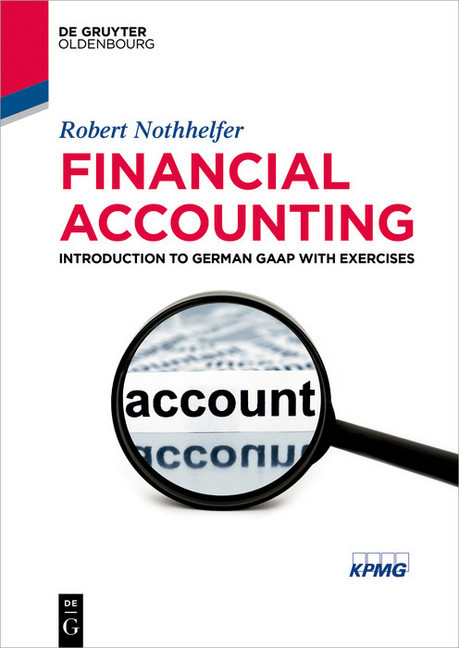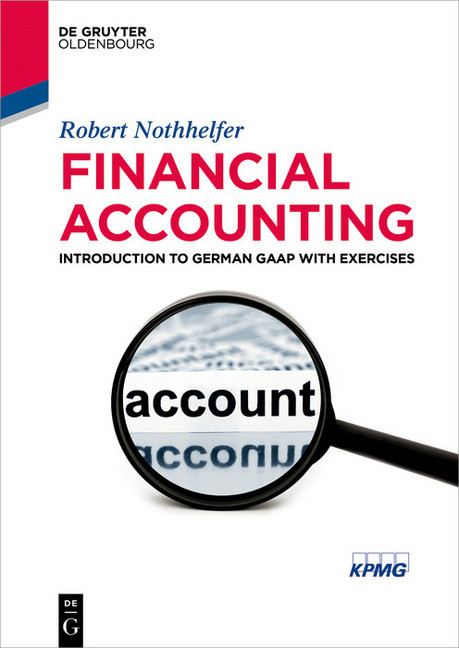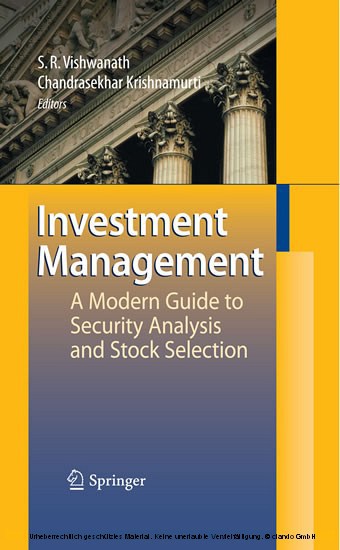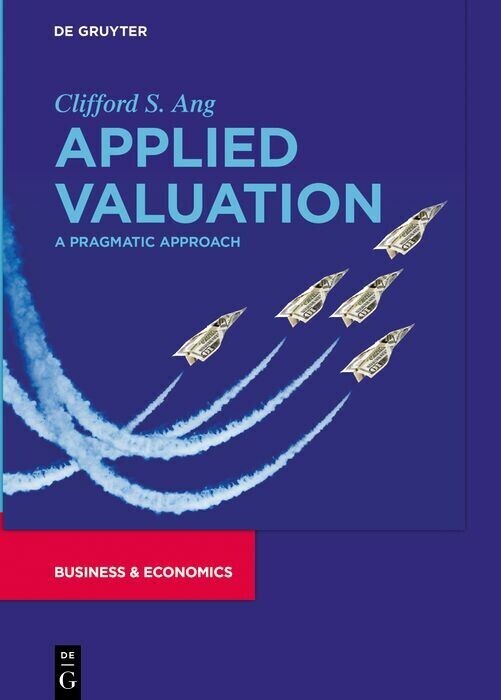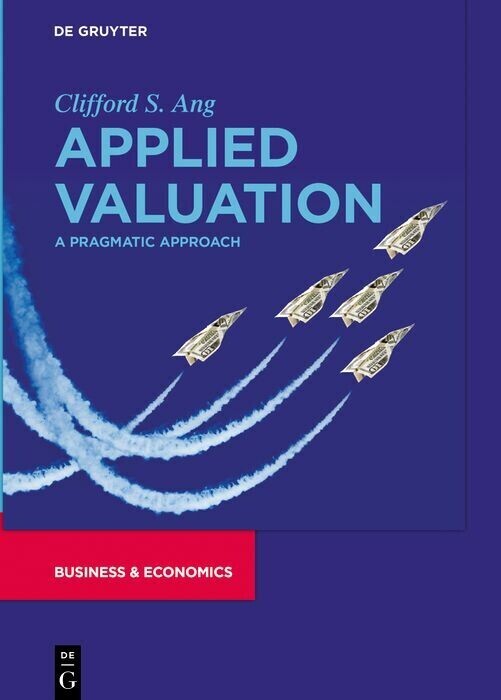Rational Investing with Ratios
Implementing Ratios with Enterprise Value and Behavioral Finance
Rational Investing with Ratios
Implementing Ratios with Enterprise Value and Behavioral Finance
Explaining the underlying logic behind financial ratios, this book adds to the discussion on the importance and implementation of ratios and illustrates the essential role that they play in company evaluations and investment screening. The author explores how ratios establish a proportional relationship between accounting and market data, and when well-integrated into a global company vision, can become powerful indicators capable of outlining relevant information and identifying warning signs. Going beyond merely listing possible ratios and looking further into their implementation, each ratio family is demonstrated with numerous graphs and practical case studies involving companies such as Amazon, Walmart and Alibaba. With a focus on behavioral finance and enterprise value, this innovative Palgrave Pivot will be of interest to investors, bankers and entrepreneurs, as well as finance scholars and students.
Yannick Coulon has studied at business schools in France, Germany and Switzerland, and holds an MBA and certificate in behavioral finance. Currently an investor and manager in the golf industry, he has many years of experience working for UBS Global Asset Management in Switzerland, and as the European Product Manager for the Zip drive developed by Iomega, USA. Yannick also teaches finance (including behavioral finance) at a business school in Brittany, France, and has written three books in this area.
1;Preface;5 1.1;Why Do You Need This Book?;5 1.2;Ratio Quality and Limitations;5 1.3;Accuracy or Trend;6 1.4;Comparisons Have Limitations;6 1.5;Ratios Are a Beginning, Not an End Unto Themselves;6 1.6;Ratios Are Numerous;6 1.7;Ratios for Family Businesses and Corporations;6 1.8;Enterprise Value (EV);6 1.9;A Touch of Behavioral Finance;7 1.10;The Narrative Thread;7 2;Acknowledgments;9 3;Contents;10 4;List of Figures;14 5;List of Tables;16 6;Chapter 1: Presentation of Key Financial Metrics and Enterprise Value;19 6.1;1.1 The Balance Sheet, Income and Cash Flow Statements;19 6.1.1;1.1.1 The Balance Sheet;20 6.1.1.1;Liability Versus Debt, Definition and Scope;20 6.1.2;1.1.2 The Income Statement;22 6.1.3;1.1.3 The Cash Flow Statement;23 6.2;1.2 The Cash Flows;23 6.2.1;1.2.1 FCFF and FCFE;23 6.2.2;1.2.2 EBITDA;25 6.2.3;1.2.3 Recurring Cash Flows;26 6.2.3.1;Company Comparison: Bogey or Eagle?;26 6.3;1.3 Enterprise Value (EV);27 6.3.1;1.3.1 Capital Employed and Operating Assets;27 6.3.2;1.3.2 Examples of Capital Employed Calculations;28 6.3.2.1;The Treatment of Cash and Cash Equivalents Can Be Complex!;29 6.3.2.2;Conclusions: SGVSL's Capital Employed;30 6.3.2.3;Conclusions: SGVSL and SGVSL Excess's Capital Employed;31 6.3.3;1.3.3 Non-Core Assets;32 6.3.4;1.3.4 Definition of Enterprise Value;33 6.3.4.1;EV Is Valued at Market Price;34 6.3.4.2;EV and the Market Value of Equity;35 6.3.5;1.3.5 The EV Concept Applied to Comparable Companies;35 6.3.6;1.3.6 The EV Concept Applied to Real Estate Investments;37 6.3.6.1;Successive Sales of Real Estate Property Alpha;37 6.3.6.2;Creation of a New Lot, Beta, Within the Large Tract of Land in 2020;39 6.3.7;1.3.7 EV Equations;40 6.3.7.1;Market Value of Debt Versus Book Value of Debt;41 6.3.7.2;Market Capitalization Definition;42 6.3.8;1.3.8 EV Calculation (MTM Accounting);42 6.3.8.1;Company SEGA's EV Calculation;42 6.3.9;1.3.9 EV Calculation (Using DCF Method);43 6.3.9.1;On the Importance of Non-Core Assets;46 6.4;1.4 Key Takeaways on Key Financial Metrics and Enterprise Value;46 6.5;References and Further Reading;47 7;Chapter 2: Efficiency Ratios;48 7.1;2.1 Efficiency Ratios;48 7.2;2.2 Inventory Days;50 7.3;2.3 Accounts Receivable Days;51 7.4;2.4 Accounts Payable Days;52 7.5;2.5 Working Capital Definitions;53 7.6;2.6 Non-Cash Working Capital Financing;57 7.7;2.7 Working Capital Management;60 7.8;2.8 Key Takeaways on Efficiency Ratios and Their Limitations;61 7.9;References and Further Reading;62 8;Chapter 3: Key Liquidity and Solvency Ratios;63 8.1;3.1 Liquidity Versus Solvency;63 8.2;3.2 Key Liquidity Ratios;64 8.2.1;3.2.1 The Three Main Liquidity Ratios;64 8.2.2;3.2.2 Liquidity Ratios of an Illiquid Company;65 8.2.2.1;Company Omega;65 8.2.3;3.2.3 Liquidity Ratios of a Financially Sound Company;66 8.2.3.1;Company Sigma;66 8.3;3.3 Key Solvency Metrics;67 8.3.1;3.3.1 Net Worth and Solvency Ratios;68 8.4;3.4 Case Studies of Three Companies Showing Contrasting Financial Situations;69 8.4.1;3.4.1 The Best-Case Scenario;69 8.4.1.1;Liquidity Ratios;69 8.4.1.2;Solvency Ratios;70 8.4.2;3.4.2 The Grey Scenario;71 8.4.2.1;Liquidity Ratios;71 8.4.2.2;Solvency Ratios;72 8.4.3;3.4.3 The Worst-Case Scenario;74 8.4.3.1;Liquidity Ratios;74 8.4.3.2;Solvency Ratios;75 8.4.3.3;Solvency at Its Worst!;76 8.5;3.5 Key Takeaways on Liquidity Plus Solvency Ratios and Their Limitations;77 8.6;References and Further Reading;78 9;Chapter 4: Debt Ratios;79 9.1;4.1 Introduction on Indebtedness;80 9.2;4.2 Financial Leverage;80 9.3;4.3 Debt to Equity Ratios;81 9.4;4.4 Debt Coverage Ratios;83 9.5;4.5 Debt Ratios Using Enterprise Value;86 9.6;4.6 Limitations of Debt to Equity Ratio;87 9.6.1;4.6.1 Companies with Negative Equity;87 9.6.1.1;Example: Company Libertee;88 9.6.2;4.6.2 Companies with Large Real Estate Holdings;90 9.6.2.1;1st Method: Separating Real Property from Operating Assets when Analyzing Debt Leverage;92 9.6.2.2;Negative Net Debt and Its Meaning;92 9.6.2.3;2nd Method: Using Non-Core Assets and Enterprise Value;93 9.7;
Coulon, Yannick
| ISBN | 9783030342654 |
|---|---|
| Artikelnummer | 9783030342654 |
| Medientyp | E-Book - PDF |
| Copyrightjahr | 2019 |
| Verlag | Palgrave Pivot |
| Umfang | 178 Seiten |
| Sprache | Englisch |
| Kopierschutz | Digitales Wasserzeichen |

